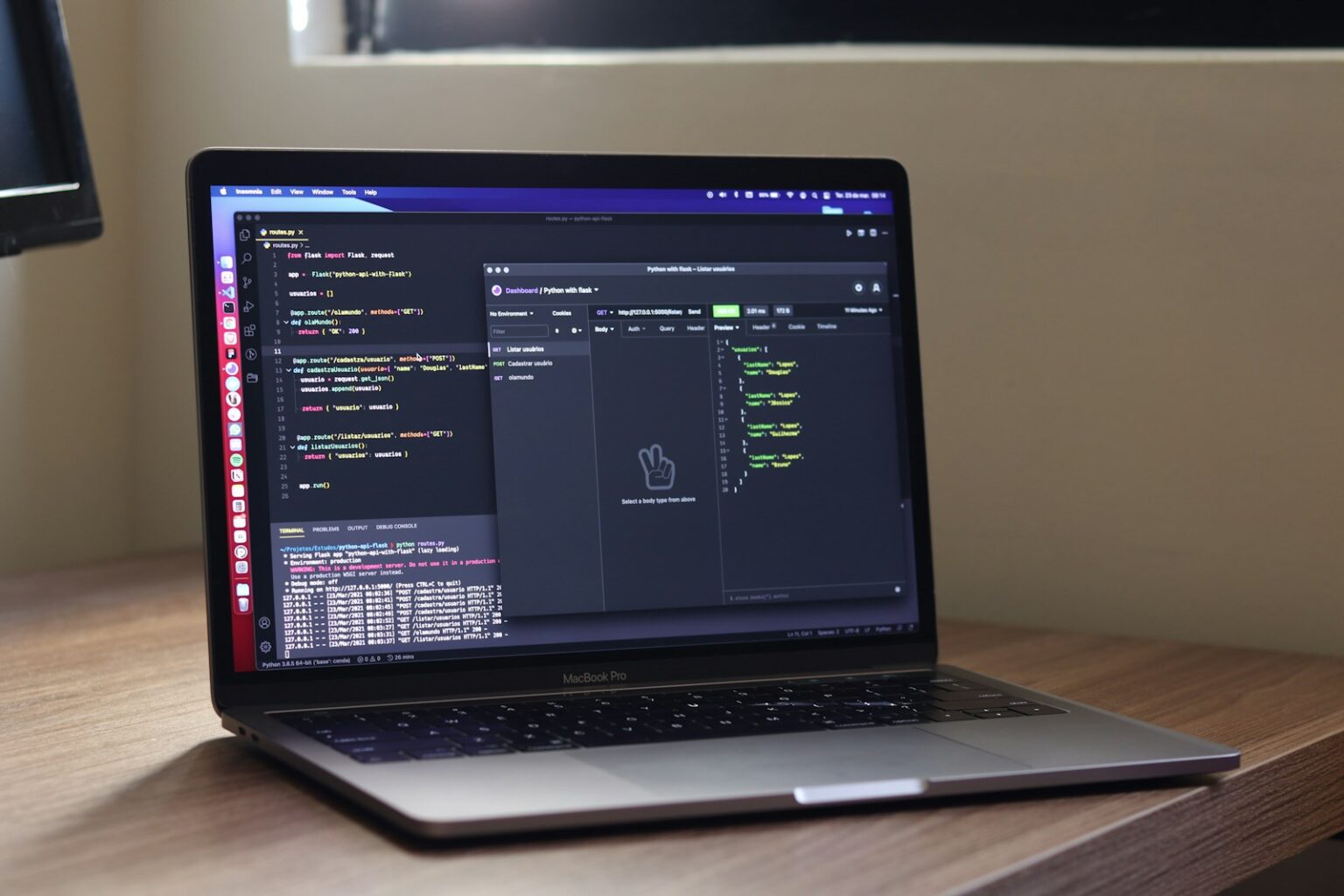Establishing a robust communication interface is the foundation of delivering precise cryptocurrency metrics to any platform. Selecting a well-documented endpoint specification allows seamless integration with various programming environments, ensuring consistent retrieval of market values, transaction histories, and blockchain statistics.
Service architecture should prioritize modularity and fault tolerance, enabling efficient handling of high-frequency queries and real-time updates. Implementing layered caching strategies combined with event-driven notifications enhances responsiveness while reducing redundant requests for volatile digital currency indicators.
The programming approach must emphasize clear data contracts and version control. Utilizing standardized serialization formats such as JSON or Protocol Buffers facilitates cross-language compatibility. Regularly testing integration scenarios guards against schema drift and preserves smooth interoperability between client applications and backend sources.
API Development: Crypto Data Access
For efficient programming of interfaces handling blockchain information streams, prioritizing seamless integration between service endpoints and client applications is paramount. Establishing robust communication channels ensures reliable retrieval of transaction histories, wallet balances, and market prices with minimal latency. Utilizing standardized protocols like REST or WebSocket enhances real-time interaction capabilities and reduces overhead during request cycles.
Implementing a modular architecture in the creation of these services facilitates scalability and maintenance. By dividing tasks into discrete components such as authentication, rate limiting, and response parsing, developers can experiment with optimization techniques without disrupting overall functionality. This approach encourages iterative testing to refine throughput under varying network conditions.
Programming Techniques for Blockchain Information Retrieval
One effective strategy involves asynchronous request handling combined with caching layers that store frequently queried results locally. For instance, querying block confirmation statuses repeatedly can be optimized by caching recent blocks’ metadata temporarily, reducing redundant calls. This method improves performance when integrating external providers offering transactional details across multiple chains.
The design of the interface should also accommodate flexible query parameters allowing users to specify filters like time ranges, token types, or address formats. Providing comprehensive documentation on endpoint capabilities supports developers in constructing precise queries tailored to analytical needs. Such versatility is essential for laboratory-style experiments where controlled variable adjustments reveal system behavior nuances.
Security considerations must not be overlooked during service construction; employing OAuth 2.0 or API key mechanisms ensures authenticated access while protecting sensitive user information. Rate-limiting algorithms prevent abuse and maintain quality of service under heavy usage scenarios common in market analysis tools fetching price feeds or order book snapshots.
The experimental process of integrating multiple blockchain networks demands attention to protocol discrepancies such as varying consensus finality times and differing transaction schemas. By systematically comparing response structures from Ethereum-based chains versus UTXO models like Bitcoin, one can develop adaptive parsers capable of harmonizing heterogeneous inputs into unified analytical formats.
This scientific methodology encourages incremental validation at each stage–from initial connectivity checks through payload integrity assessments–ensuring that the interface reliably conveys accurate information before deployment in live environments. Such disciplined investigation fosters confidence in the engineering outcomes within Crypto Lab crypto-lab’s framework for advanced digital asset research.
Integrating Crypto Lab API
To establish a reliable connection for retrieving blockchain-related metrics, begin by configuring the service endpoint with appropriate authentication tokens. This ensures secure communication and mitigates unauthorized requests during the integration phase. Employing standard RESTful protocols simplifies interaction, allowing for efficient querying of transactional records, token prices, and network statistics.
Implementing the interface requires thorough comprehension of its request-response schema. Each method call returns structured information in JSON format, which facilitates parsing and further manipulation within various programming environments. Experiment with pagination parameters to optimize data throughput when handling extensive historical records or real-time event streams.
Technical Exploration of Interface Integration
The experimental use of this toolset reveals that synchronous calls may introduce latency under high-frequency polling scenarios. Consider adopting asynchronous programming models such as callbacks or promises to improve responsiveness in client applications. For example, integrating with JavaScript’s fetch API or Python’s asyncio libraries allows non-blocking operations that maintain user experience fluidity.
Data normalization plays a critical role in harmonizing diverse output formats from multiple endpoints. Designing middleware layers capable of translating raw outputs into standardized structures enhances interoperability across different analytical modules. Testing such transformations incrementally can uncover subtle discrepancies in timestamp formats or numerical precision affecting downstream computations.
Security aspects warrant continuous scrutiny: rate limiting policies embedded within the interface prevent abuse but require adaptive retry mechanisms to handle temporary throttling gracefully. Constructing error-handling routines that parse HTTP status codes and implement exponential backoff strategies will safeguard stability during peak demand periods.
Finally, validate integration results against known benchmarks or external references to confirm accuracy and consistency. Experimental cross-validation using third-party aggregators or blockchain explorers can identify anomalies arising from network forks or delayed consensus updates. Such rigorous verification fosters confidence in deploying the solution for production-grade analytic pipelines.
Authentication Methods Overview
For secure interaction with blockchain-related interfaces, token-based authentication remains the most reliable method. Implementing OAuth 2.0 flows facilitates controlled authorization by issuing short-lived tokens that grant scoped permissions to external services without exposing user credentials directly. This approach supports seamless integration of third-party clients while maintaining stringent protection against unauthorized requests and replay attacks.
Another robust technique involves the use of cryptographic key pairs combined with digital signatures. By signing each request with a private key corresponding to a registered public key, systems verify the sender’s identity and message integrity simultaneously. This method fits well in decentralized environments where trust minimization is paramount, enabling secure communication without centralized credential storage.
Exploring Authentication Techniques in Blockchain Interfaces
Basic authentication, though straightforward, presents inherent risks due to plaintext credential transmission unless paired with transport layer encryption such as TLS. Its simplicity makes it useful for rapid prototyping or internal network scenarios but unsuitable for production-grade deployments demanding high security standards. In contrast, JSON Web Tokens (JWT) offer stateless verification mechanisms where claims embedded within the token can encode user roles and expiration timestamps, enabling scalable session management across distributed services.
Multi-factor authentication (MFA) further enhances security by requiring additional verification layers beyond passwords or keys–commonly through time-based one-time passwords (TOTP) or hardware tokens. Integrating MFA into blockchain service endpoints can dramatically reduce susceptibility to credential compromise and automated abuse attempts. Experimentally combining these authentication schemes yields layered defense models that strengthen overall interface resilience while preserving smooth operational workflows essential for continuous transactional throughput.
Fetching Real-Time Price Data
To establish a reliable interface for retrieving real-time valuation metrics of digital assets, integrating with specialized endpoints that offer instant market quotations is mandatory. These services provide granular tick-by-tick updates or interval snapshots, essential for constructing responsive monitoring systems or trading algorithms. Choosing an endpoint supporting WebSocket streaming can significantly enhance temporal resolution by maintaining persistent connections and pushing fresh information as it arrives.
Interfacing with such a service requires careful consideration of protocol specifications and rate limits imposed to prevent overload. Implementing robust error handling and reconnection strategies ensures continuity in the flow of numeric indicators even during transient disruptions. Additionally, authentication tokens or API keys frequently govern authorized invocation, thus safeguarding usage while enabling precise tracking of call volumes.
Technical Approaches to Integration
The programming process often begins with crafting requests conforming to RESTful principles or subscribing to event-driven streams through socket interfaces. When utilizing REST endpoints, query parameters can specify desired trading pairs (e.g., BTC/USD), aggregation intervals, or custom filters enhancing relevance. Conversely, streaming protocols facilitate near-instantaneous updates without repeated polling overheads.
Case studies reveal that combining both paradigms allows applications to bootstrap initial state via HTTP calls and then maintain synchronization through continuous sockets. This hybrid approach balances latency demands against resource consumption effectively. Moreover, leveraging standardized data models simplifies downstream processing and visualization tasks within analytic pipelines.
- Request construction must align with schema definitions stipulated by the provider.
- Error codes require parsing to implement adaptive retry loops minimizing data gaps.
- Timestamp normalization across diverse sources is critical for consistent comparative analysis.
In practical experiments involving multiple exchanges’ quotation feeds, discrepancies in update frequency and precision become evident. Such variations impact arbitrage detection algorithms relying on uniform freshness of pricing vectors. Hence, selecting providers offering comprehensive coverage with minimal latency is advisable for accuracy-critical applications.
Finally, embedding these retrieval methods into broader software ecosystems demands modular design patterns supporting extensibility and future feature incorporation. For example, abstracting service interaction behind interface layers permits seamless substitution if alternative vendors emerge offering improved throughput or richer metadata. Continuous benchmarking under realistic network conditions aids in refining integration quality and responsiveness over iterative cycles.
Error Handling Best Practices in Crypto Service Integration
Implementing robust error management mechanisms is fundamental for any interface providing blockchain-related information. Immediate detection and classification of faults during endpoint requests prevent cascading failures throughout the system. For instance, distinguishing between client-side input errors and server-side processing issues allows responsive feedback loops that maintain service reliability. Employing structured response codes and detailed error messages within JSON objects facilitates swift debugging and operational transparency.
When designing communication pathways with digital asset platforms, graceful degradation strategies prove indispensable. Retry logic with exponential backoff reduces strain on overloaded services while minimizing unnecessary traffic bursts during network instability. Integrating circuit breaker patterns ensures that persistent failures trigger fallback procedures without exhausting resources or impacting user experience adversely. Monitoring latency thresholds alongside error rates helps identify bottlenecks before they escalate into critical outages.
Advanced Techniques for Fault Resilience
Effective programming practices incorporate layered validation both at request submission and response reception stages. Schema validation using tools like JSON Schema or OpenAPI specifications confirms data conformity early, preventing malformed payloads from propagating through the system. Furthermore, asynchronous handling of callbacks or event-driven architectures enable non-blocking operations crucial for high-throughput environments interacting with decentralized ledgers.
Case studies from prominent blockchain indexers reveal that combining synchronous error trapping with asynchronous logging enhances traceability without sacrificing performance. For example, capturing exceptions during token price retrieval while concurrently recording metrics supports retrospective analysis and adaptive tuning of integration workflows. Utilizing idempotency keys during transaction-related calls avoids duplicate processing caused by retry attempts, preserving ledger consistency.
- Validate input parameters rigorously before sending requests to external endpoints.
- Implement timeouts specific to each service interaction to detect unresponsive nodes swiftly.
- Design fallback routines that provide cached or default responses when live queries fail.
- Log all anomalies with sufficient context including timestamps, request IDs, and payload snapshots.
- Employ automated alerting systems triggered by predefined error thresholds to expedite incident resolution.
The intersection of meticulous error handling and thoughtful architectural design empowers developers to construct resilient connectors enabling seamless retrieval of distributed ledger insights. Continuous experimentation through controlled fault injection tests fosters deeper understanding of failure modes and strengthens overall system robustness against unpredictable environmental variables inherent in blockchain ecosystems.
Optimizing Request Thresholds for Enhanced System Interactions
Implementing dynamic throttling strategies within integration layers significantly improves the reliability of service endpoints, especially when handling high-frequency transactional queries related to cryptographic market fluctuations. Introducing adaptive rate limiting based on real-time usage analytics allows programming interfaces to maintain throughput without compromising latency or triggering reject cascades.
Experimental results demonstrate that combining token bucket algorithms with priority queues effectively balances burst traffic and sustained request volumes, preserving continuous synchronization with distributed ledgers and off-chain aggregators. This approach not only safeguards against saturation but also enhances client experience by reducing error rates and minimizing redundant polling.
Future Perspectives on Interface Scalability and Protocol Design
- Integration Efficiency: Leveraging event-driven architectures alongside webhook callbacks can reduce unnecessary polling, optimizing resource consumption while ensuring timely updates from decentralized networks.
- Service Resilience: Incorporating circuit breaker patterns protects downstream components from cascading failures during peak load scenarios, enabling graceful degradation and faster recovery.
- Programming Innovations: Employing asynchronous paradigms such as reactive streams facilitates better concurrency management, allowing clients to process streaming information without breaching established limits.
- Interface Evolution: Transitioning towards GraphQL-based query models empowers consumers to retrieve precisely scoped datasets, minimizing overhead and aligning with evolving analytical requirements.
The interplay between regulated request quotas and intelligent orchestration mechanisms will define next-generation solutions for seamless information retrieval in cryptographic ecosystems. Encouraging experimental implementations that measure throughput impact under varied constraint configurations can lead to refined methodologies tailored for heterogeneous environments. As distributed consensus protocols advance, coupling these innovations with predictive throttling informed by machine learning could usher in unprecedented operational agility and precision.








